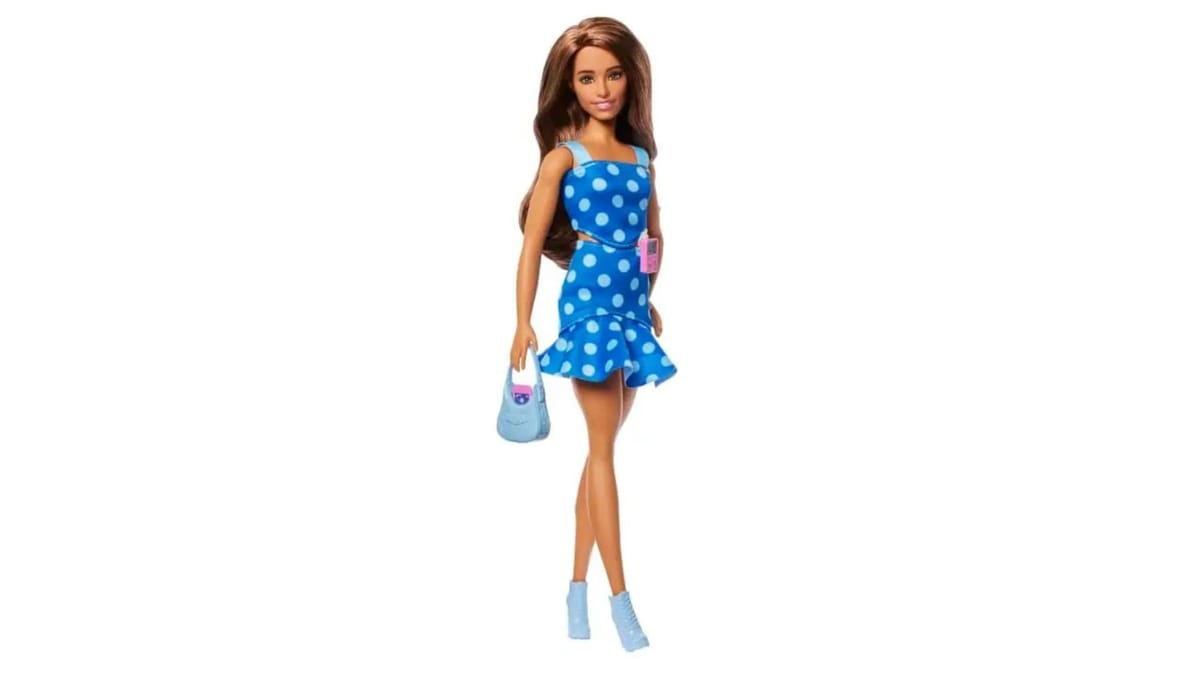Mattel Launches First Type 1 Diabetes Barbie Doll with Glucose Monitor and Insulin Pump

An expanded and full version of the New York Post report
Barbie is an undisputed name in the world of toys. For decades, this Mattel doll has been an integral part of children's childhoods around the world. Over time, Barbie has changed herself, taking on new forms, new identities. Recently, Barbie has taken a new and very significant step in this journey. According to a report in the New York Post, Mattel has launched the first Barbie doll with type 1 diabetes (T1D). This doll is not just a new addition, it is a powerful symbol of inclusion, representation and creating awareness about chronic illnesses. This doll has opened a new horizon in the world of children's play, where differences are celebrated and every child's experience is respected.
Barbie's new companion: glucose monitor and insulin pump
This new Barbie doll is not only beautiful to look at, it also portrays the reality of a person with type 1 diabetes. The doll comes with a continuous glucose monitor (CGM) that is attached to her arm and an insulin pump that is attached to her waist. These devices are state-of-the-art technology for managing type 1 diabetes. Not only that, the doll also comes with a small smartphone, on whose screen the CGM app is displayed. Through this, children will get the idea of monitoring blood sugar levels. The doll's outfit also has a specialty. The blue and white polka dot outfit is inspired by the global symbol of diabetes awareness, the blue circle. These small details make the doll more realistic and educational.
Barbie's long journey towards inclusion
This new look for Barbie is not a coincidence. For decades, Barbie has been trying to break away from its traditional idea of beauty and become more diverse and inclusive. When Barbie first came to the market in the 1950s, her blonde hair, blue eyes, and perfect body were the only criteria for beauty. But times have changed, and with it, people's thinking.
Over time, Mattel has realized that not all children in the world are the same. Their skin color, hair type, body shape, and experiences are different. Therefore, dolls representing different races, colors, and cultures have been brought into the world of Barbie. We have seen black Barbie, Hispanic Barbie, Asian Barbie. Not only that, but to honor physical diversity, Mattel has also created Barbie in a wheelchair, Barbie with prosthetic legs, and Barbie with Down syndrome. Barbie with type 1 diabetes is a new milestone in this journey.
The importance of inclusion in the world of toys
Toys play a huge role in children's emotional and social development. When children play with dolls that look like them or match their experiences, their self-esteem and confidence increase. They learn to feel valued and part of society. When a child with type 1 diabetes sees this new Barbie, she will understand that she is not alone. There are many others like her and that her condition is not something to be ashamed of or hide.
On the other hand, this doll is also very important for children who do not have diabetes. Through this, they will learn about chronic illnesses and physical differences from an early age. A sense of empathy and respect will be awakened in them. They will learn that everyone can fulfill their dreams despite some physical limitations. In this way, through play, the next generation will contribute to building a more tolerant and inclusive society.

Type 1 Diabetes Community: Joy and Recognition
The arrival of this new Barbie has created a lot of excitement and joy in the type 1 diabetes community. Parents, children and diabetes organizations have expressed their excitement on social media. Many parents have reported that their children were overwhelmed with emotion when they saw the doll. For the first time, they have received a toy that reflects their own lives.
Mattel worked closely with Breakthrough T1D (formerly JDRF), a world-renowned diabetes research and advocacy organization, to create this doll. As a result, the medical devices that accompany the doll and its overall presentation are very accurate and realistic. According to Breakthrough T1D, this doll will help millions of children see themselves and their condition positively.
Where stars are also inspiration
There are many famous people around the world who are living a successful life with type 1 diabetes. Their life stories inspire millions. Popular singer Nick Jonas, actress Halle Berry, and British model Lila Moss are among them. Lila Moss, who is the daughter of supermodel Kate Moss, often proudly displays her insulin pump at her fashion shows. These stars have proven that with proper management and a positive attitude, it is possible to achieve success in any field, even with type 1 diabetes. The new Barbie will become a new role model for children, just like these stars.
Diabetes Technology: Explained in Simple Language
The Continuous Glucose Monitor (CGM) and Insulin Pump that Barbie comes with may seem new to many. Simply put, a CGM is a small sensor that is placed under the skin and continues to measure blood sugar levels throughout the day. This information is sent to a smartphone or a special receiver via a transmitter. This reduces the need for frequent finger prick blood tests.
On the other hand, an insulin pump is a small computerized device that automatically delivers insulin according to the body's needs. It is connected to the body through a catheter. These technologies have made diabetes management much easier and more effective. Through Barbie, children will be introduced to these technologies, which can spark an interest in science and health technology in them.
Towards a bright future
The arrival of Barbie with Type 1 Diabetes is not just a toy industry event, it is a reflection of a social movement. It reminds us that there is no single definition of beauty and normality. True beauty lies in diversity. This doll will teach children the language of empathy, the lessons of love, and the importance of inclusion. It will inspire millions of children to dream and believe in themselves. This bold step by Barbie is undoubtedly an important step towards a brighter and more inclusive future. This news from the New York Post is therefore not just a news story, it is a new message of hope and inspiration.



